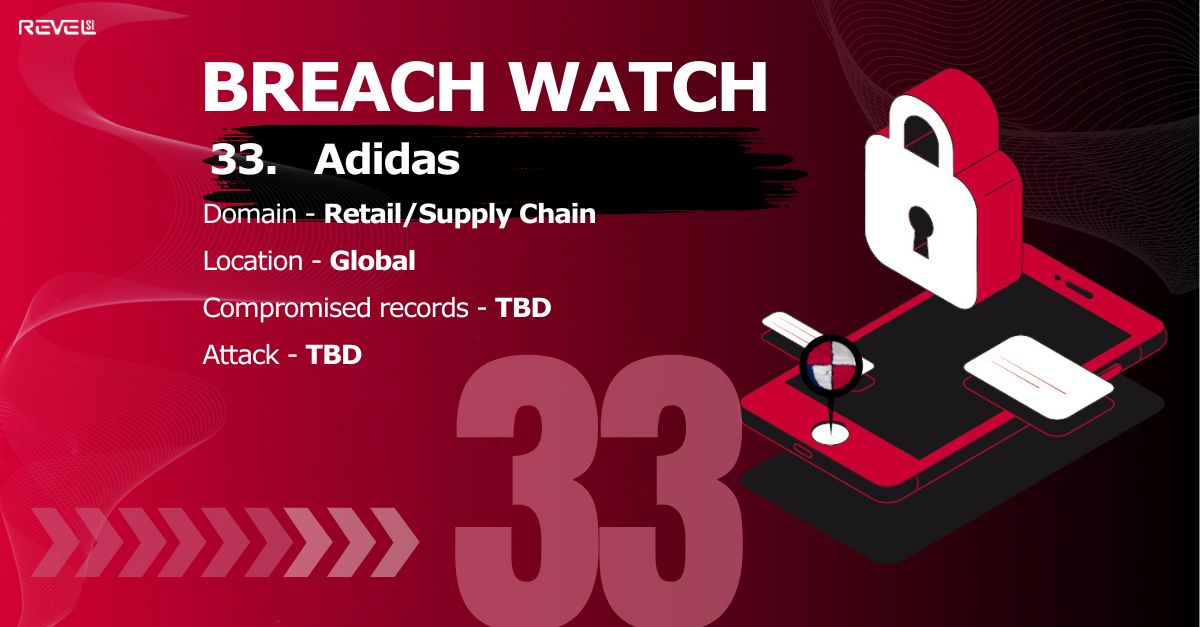Adidas Data Breach: Cybersecurity Is Only as Strong as the Weakest Link

In late May 2025, Adidas confirmed a data breach that exposed the contact information of customers — but the breach didn’t start from within its own systems. Instead, the incident originated through a third-party customer service provider. While the compromised data di
What Happened?
Adidas discovered that a cybercriminal gained unauthorized access to a vendor that handles customer service interactions. Through this third-party platform, the attacker was able to view contact details of customers who had previously reached out to Adidas support. This included names, email addresses, and phone numbers.
Importantly, Adidas emphasized that no passwords, payment information, or account credentials were accessed. But even with that reassurance, the breach exposes an uncomfortable truth for modern businesses: the threat doesn't always come from your front door — sometimes, it's your neighbor who leaves theirs wide open.
The Real Risk: Third-Party Vulnerabilities
This wasn’t a direct attack on Adidas' core infrastructure. It was an indirect hit, made possible by weaker security in the company’s extended ecosystem. The very vendors that brands rely on to operate efficiently — whether for logistics, IT, or customer support — are also potential entry points for attackers.
The Adidas incident echoes a pattern we’ve seen time and again in recent years. Companies like Target, SolarWinds, and MOVEit have all been impacted by breaches that began not with them, but with third-party providers. It’s not enough to lock your own doors; you need to make sure your partners are locking theirs, too.
Why This Matters
While contact information might not seem critical, it can easily be weaponized. Phishing attempts, scam messages, or targeted social engineering attacks often start with nothing more than an email address and a name.
If you've interacted with Adidas customer support in recent months, it’s a good idea to be extra cautious with emails or messages that look like they come from the company. And if you're running a business? Take this as your cue to double-check how well your own vendors are protecting shared data.
The Bigger Picture: Cybersecurity as a Supply Chain Issue
We often think of cybersecurity as something internal — firewalls, encrypted databases, and antivirus software. But the Adidas breach shows that it's time we widen the lens.
Every organization today is part of a larger digital supply chain. Data is constantly exchanged with external partners, often through cloud-based platforms or third-party software. If even one of those links has weak security practices, it can compromise the entire chain.
To put it simply: your cybersecurity posture isn't just about what you control. It’s about what everyone you trust controls too.
What Can Be Done?
For businesses:
- Audit your vendors regularly. Make sure they meet minimum cybersecurity standards.
- Include cybersecurity clauses in all contracts — with accountability mechanisms.
- Limit data exposure. Share only what's necessary with third parties, and encrypt data in transit and at rest.
For customers:
- Stay alert to phishing or scam messages.
- Avoid clicking on suspicious links.
- Use unique passwords for different services and enable two-factor authentication where possible.
Final Thoughts
The Adidas breach might not be the largest or most devastating cyber incident of the year, but it perfectly illustrates a growing blind spot in cybersecurity strategy: the risk posed by third-party vendors.
In a world where businesses are more interconnected than ever, protecting just your own walls isn’t enough. As the old saying goes, a chain is only as strong as its weakest link.
